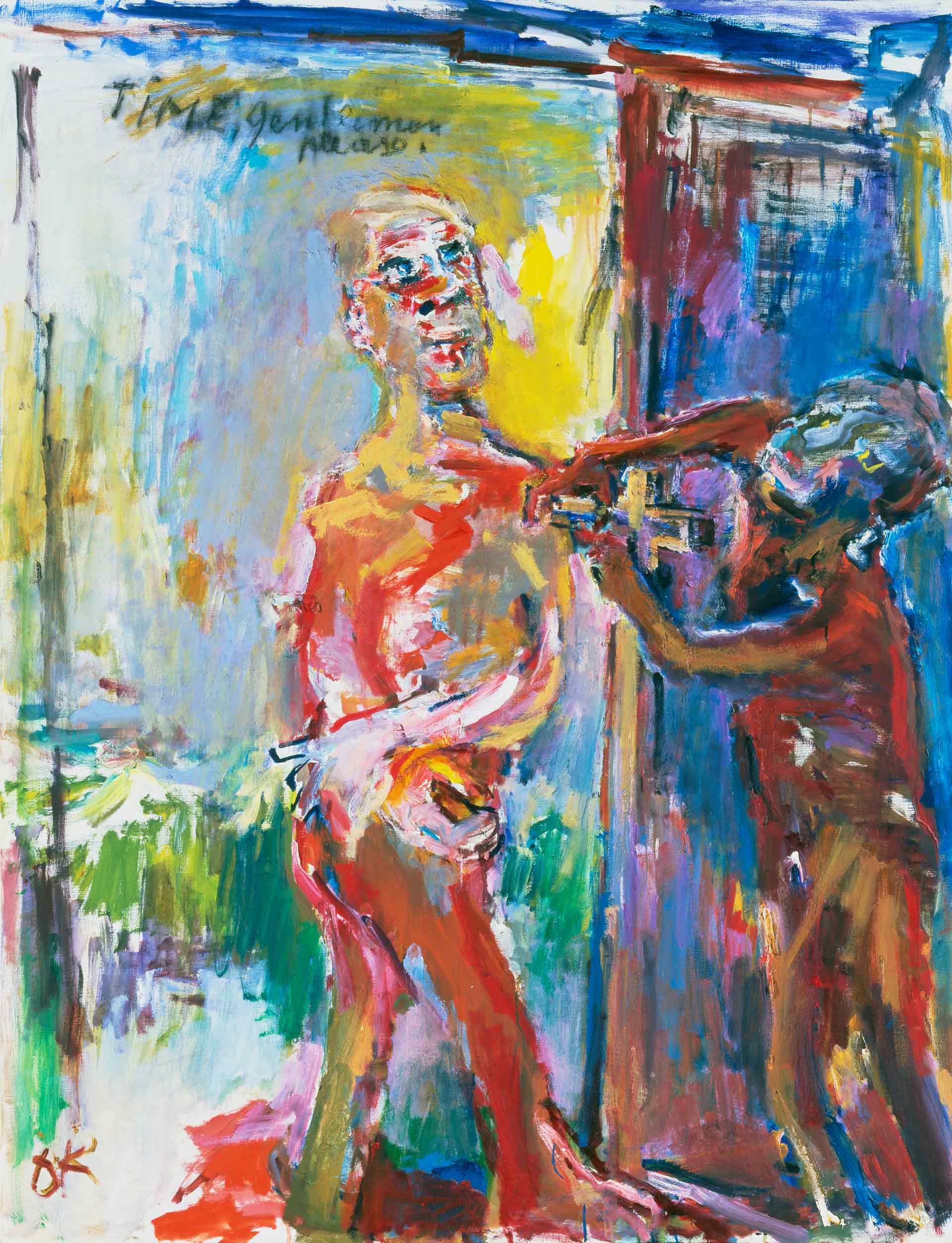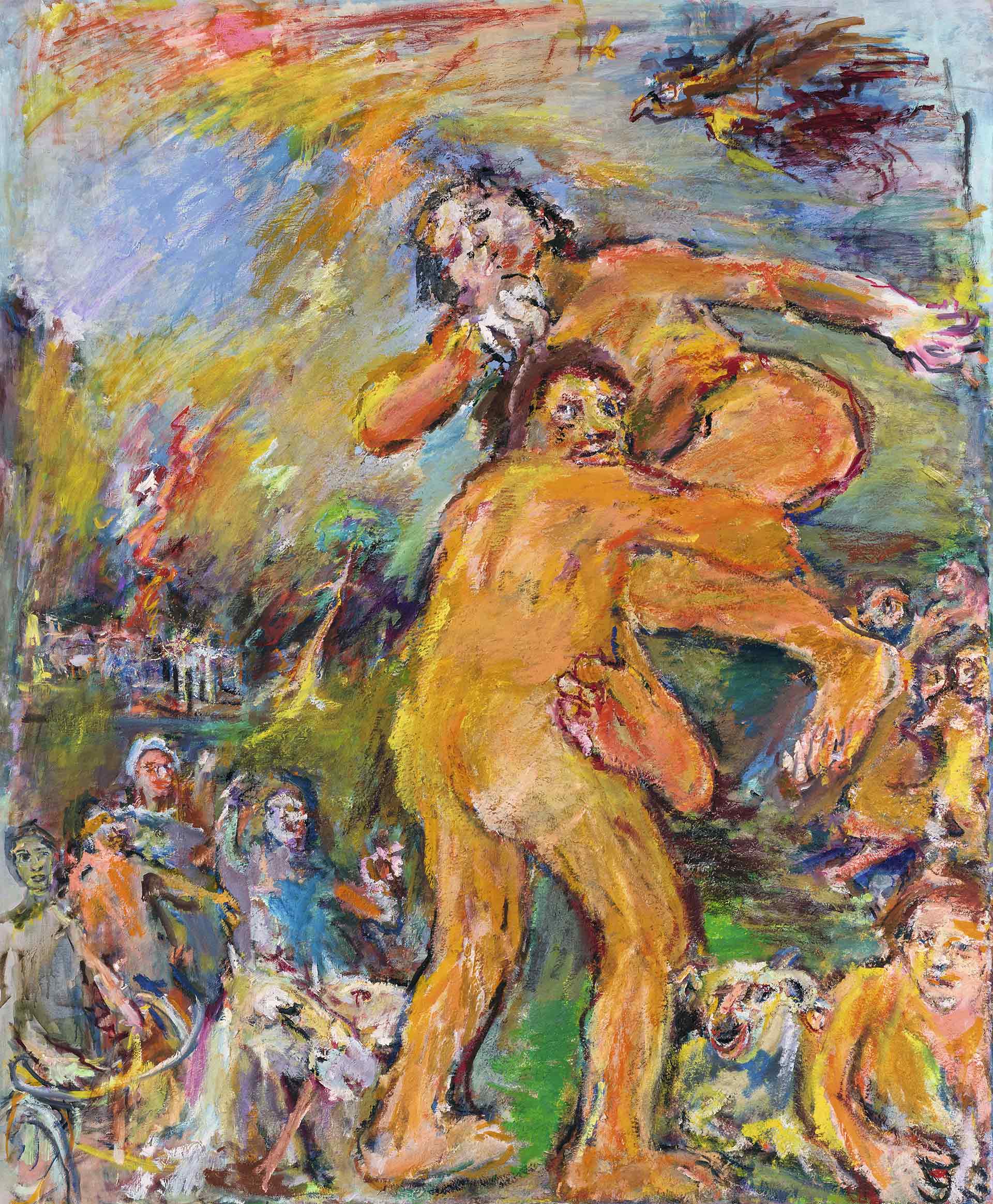Section VI - A European Artist in Switzerland (1946–1980)
In 1949, a large retrospective was devoted to Kokoschka at the Museum of Modern Art, New York. It confirmed his status as a leading international artist, and around this time he painted many portraits of leading political figures. In 1953 he settled in Villeneuve, on Lake Geneva, Switzerland.
A vehement opponent of abstract art, he opened in Salzburg a School of Vision in 1953 that offered teaching through images and the observation based on the writings of 17th-century philosopher and educator Jan Amos Komenský, also known as Comenius.
At that time, Kokoschka distinguished himself as a fervent defender of a unified Europe. Driven by the idea of pursuing the (re-)construction of a common European culture, he represented an increasing number of mythological stories and Greek tragedies. From the myth of Prometheus to Aristophanes’s play The Frogs, he sought in these exemplary stories means of analyzing the current situation in Europe and offered up a critical commentary on it.
Kokoschka’s later works show a pictorial radicality close to his early output, with the uncompromising crudeness of his depictions and the urgency of his touch opening the way to a new generation of painters. His belief in the subversive power of painting, a vehicle for emancipation and education, remained steadfast until his death.


